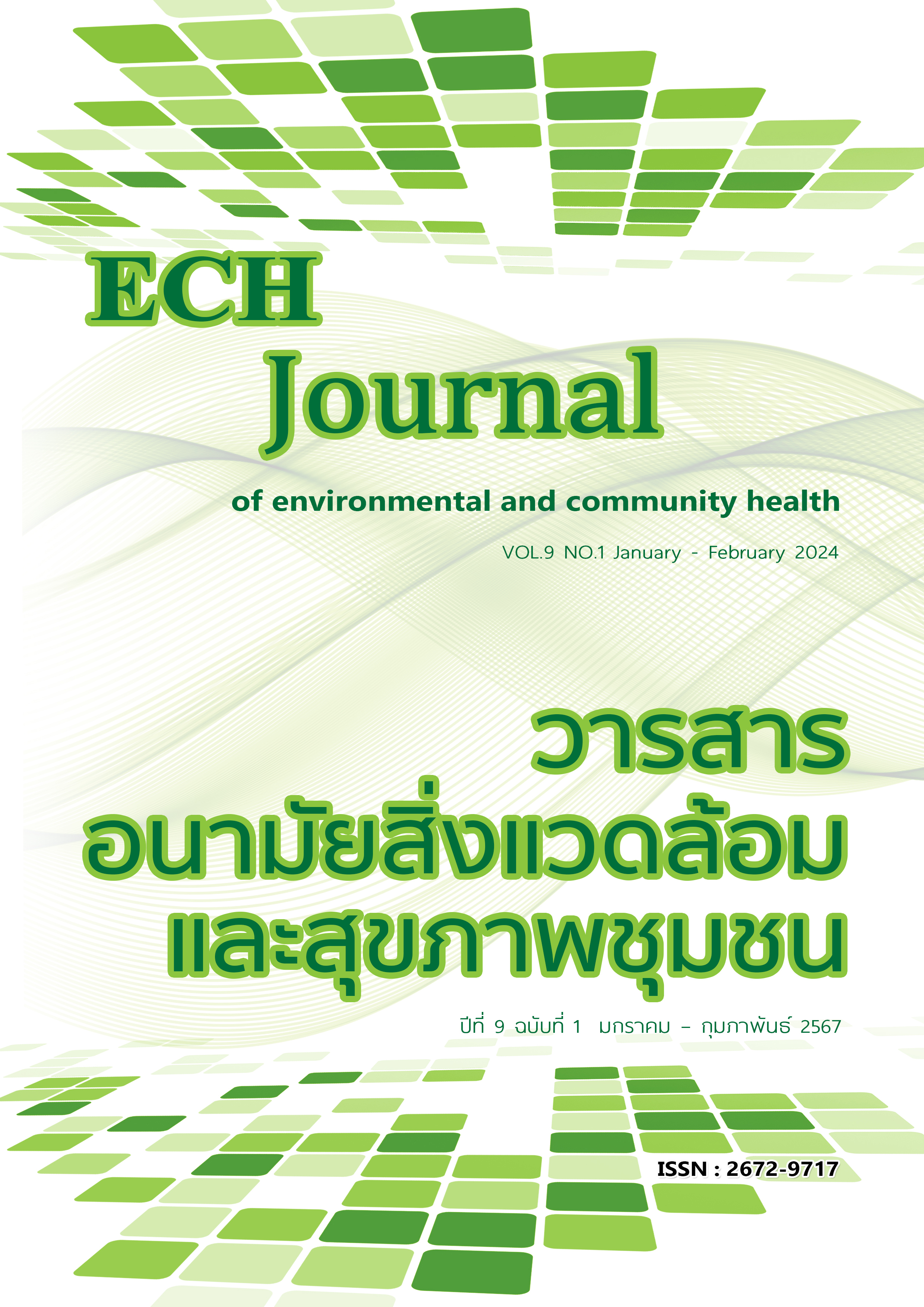Nursing care of a patient with esophageal cancer receiving radiotherapy that has complications from Pneumonitis with Sepsis with AF with RVR.
Keywords:
esophageal cancer, pneumonia, atrial fibrillationAbstract
This study was a case study aimed to study the nursing process and develop a nursing model for patients with Esophageal cancer receiving radiotherapy who have complications from pneumonitis along with Sepsis with AF with RVR Number of cases: 1, by studying the data Retrospective analysis of outpatient and inpatient medical records. Lop buri Cancer Hospital It contains information about the health history of the case study. Information about laboratory tests Information about the doctor's treatment from the time of admission until discharge. Summary of nursing diagnoses from admission until discharge. From visiting nursing patients according to the principles of the nursing process and summarize the case studies and discuss the results. By applying nursing theory Theoretical concept that. Suitable for case study patients, including Orem's nursing theory 1 and the concepts of nursing for critically ill patients, FASTHUG and BANDAGE2, applied to patient care and to continuously monitor and provide care and assistance to patients and their families. After being discharged from the hospital, the patient and family can take care of themselves. and live normally
Results: Case study of a Thai male patient, age 54 years, with no history of congenital disease. Admitted to the hospital to receive radiotherapy, Plan RT 5000 cGy/25Fx. Later, the patient developed complications during radiotherapy, including infectious pneumonia along with bloodstream infections and a fluttering heart. after receiving treatment Patients can continue with radiation until it is complete. and returned to recuperate at home
References
Orem DE, Nursing: Concepts of Practices. 6th ed. St. Louis: Mosby Year Book; 2001.
Ferlay J, Shin HR, Bray F, Forman D, Mathers C, Parkin DM. Estimates of worldwide burden of cancer in 2008: GLOBOCAN 2008. Int J Cancer 2010; 127: 2893–917.
Jemal A, Siegel R, Ward E, Hao Y, Xu J, Thun MJ. Cancer statistics, 2009. CA Cancer J Clin 2009; 59: 225–49.
Enzinger PC, Mayer RJ. Esophageal cancer. N Engl J Med 2003; 349: 2241–52.
Lepage C, Rachet B, Jooste V, Faivre J, Coleman MP. Continuing rapid increase in esophageal adenocarcinoma in England and Wales. Am J Gastroenterol 2008; 103: 2694–99.
Pohl H, Welch HG. The role of overdiagnosis and reclassification in the marked increase of esophageal adenocarcinoma incidence. J Natl Cancer Inst 2005; 97: 142–46.
Imsamran W, Chaiwerawattana A, Wiangnon S, et al. Cancer in Thailand. Volume VIII, 2010-2012
Lagergren J, Bergstrom R, Lindgren A, Nyren O. The role of tobacco, snuff and alcohol use in the aetiology of cancer of the oesophagus and gastric cardia. Int J Cancer 2000;85:340-346.
Engel LS, Chow W-H, Vaughan TL, et al. Population attributable risks of esophageal and gastric cancers. J Natl Cancer Inst 2003;95:1404-1413.
Freedman ND, Abnet CC, Leitzmann MF, et al. A prospective study of tobacco, alcohol, and the risk of sophageal and gastric cancer subtypes. Am J Epidemiol 2007;165:1424-1433
Turati F, Tramacere I, La Vecchia C, Negri E. A meta-analysis of body mass index and esophageal and gastric cardia adenocarcinoma. Ann Oncol 2013;24:609-617.
Lagergren J, Lagergren P. Recent developments in esophageal adenocarcinoma. CA Cancer J Clin 2013;63:232-248.
Cossentino MJ, Wong RK. Barrett's esophagus and risk of esophageal adenocarcinoma.Semin Gastrointest Dis 2003;14:128-135.
Cameron AJ, Romero Y. Symptomatic gastro-oesophageal reflux as a risk factor for oesophageal adenocarcinoma. Gut 2000;46:754-755.





